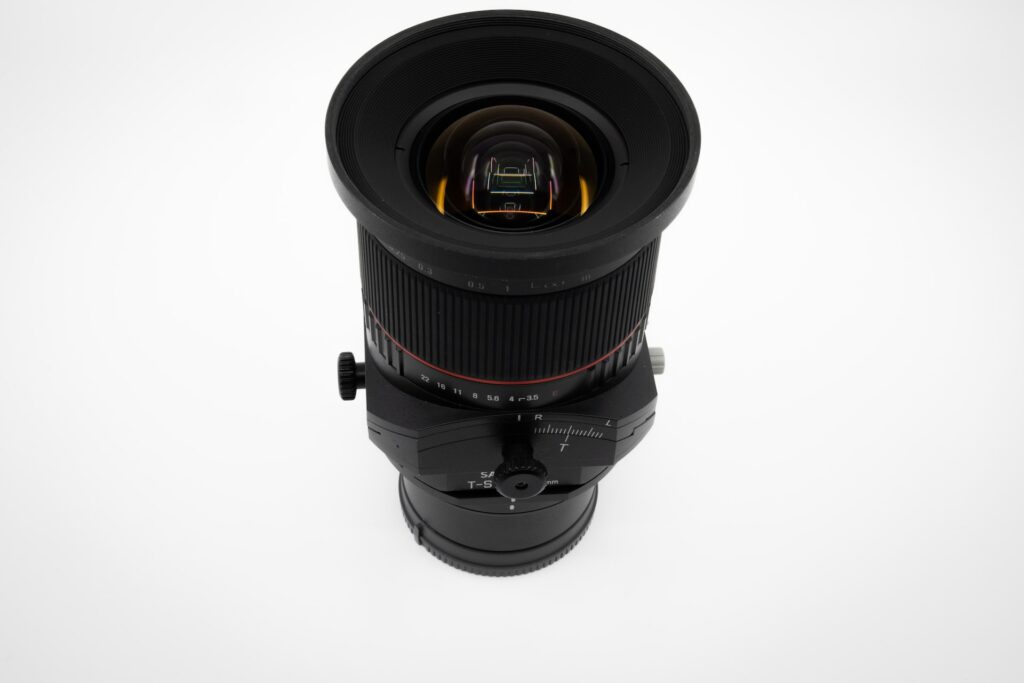Table of Contents
Tilt Shift Photography – How to Turn Any Photo into a Masterpiece
Tilt shift photography is a creative and versatile technique that can produce stunning images with a unique perspective. It involves using a special type of lens, called a tilt-shift lens, that can tilt and shift the position of the lens relative to the camera’s sensor. This allows the photographer to manipulate the depth of field, perspective, and focus of the image in ways that are not possible with a normal lens.
Tilt shift photography can be used for various purposes, such as correcting perspective distortion, enhancing depth of field, creating selective focus, or simulating a miniature effect. In this article, we will explain what tilt shift photography is, how tilt shift lenses work, what are their applications, and how to create tilt shift effects without a tilt shift lens. We will also share some tips and techniques for tilt shift photography, and recommend some popular editing software for tilt shift photography.
What is Tilt Shift Photography?
Tilt shift photography is a term that refers to two different types of lens movements: tilt and shift. These movements can be done separately or together, depending on the desired effect.
Tilt Shift Lenses Explained | Tilt Shift Photography
Overview of Tilt Shift Lenses
A tilt shift lens is a special type of lens that allows the photographer to control the tilt and shift functions independently or simultaneously. Unlike a normal lens, a tilt shift lens has a larger image circle than the camera’s sensor, which means that there is some extra space around the edges of the image. This allows the lens to move within this space without losing any part of the image.

A tilt shift lens also has a manual focus ring and an aperture ring, which allow the photographer to adjust these settings manually. This is because a tilt shift lens does not communicate with the camera electronically, and therefore cannot use autofocus or auto exposure. A tilt shift lens usually requires a tripod and some trial and error to achieve the desired effect.
Tilt shift lenses are expensive and rare, as they are designed for specific purposes and niche markets. They are also bulky and heavy, as they have complex mechanisms and optics. However, they offer unparalleled control and flexibility over the image quality and composition.
There are different types of tilt shift lenses available, depending on the focal length and the maximum amount of tilt and shift. The most common focal lengths are 24 mm, 35 mm, 45 mm, 50 mm, 85 mm, and 90 mm. The maximum amount of tilt and shift varies from 8 to 12 degrees for tilt and 10 to 12 mm for shift.

Some examples of popular tilt shift lenses are:
- Canon TS-E 24mm f/3.5L II
- Nikon PC-E 24mm f/3.5D ED
- Sony FE 50mm f/2.8 Macro
- Sigma 14mm f/1.8 DG HSM Art
How Does a Tilt Shift Lens Work?
Tilt Mode | Tilt Shift Photography
Tilting the lens means changing the angle of the lens relative to the camera’s sensor. This affects the plane of focus, which is the area of the image that is in sharp focus. Normally, the plane of focus is parallel to the sensor, meaning that everything at the same distance from the camera is in focus. However, by tilting the lens, the plane of focus can be angled or tilted, creating a shallow depth of field and a selective focus effect.
The selective focus effect can be used to draw attention to a specific part of the image, or to create a miniature faking effect. Miniature faking is when an image of a real scene looks like a miniature model or a toy. This is achieved by blurring out most of the image except for a small area that is in sharp focus. This mimics the effect of using a macro lens to photograph a small object at a close distance.
The amount of tilt depends on the focal length of the lens and the aperture setting. The longer the focal length and the wider the aperture, the more pronounced the tilt effect will be. The direction of tilt can also be changed to create different effects. For example, tilting the lens from left to right can create a horizontal slice of focus, while tilting it from top to bottom can create a vertical slice of focus.

Shift Mode | Tilt Shift Photography
Shifting the lens means moving the position of the lens parallel to the camera’s sensor. This affects the perspective and alignment of the image, without changing the focus or magnification. Normally, when photographing a tall building or an object at an angle, the vertical lines will appear to converge or diverge due to perspective distortion. However, by shifting the lens, this distortion can be corrected or enhanced.
The perspective correction effect can be used to make parallel lines appear parallel in the image, without tilting or moving the camera. This is useful for architectural photography, where straight lines and accurate proportions are important. The perspective enhancement effect can be used to exaggerate or emphasize perspective distortion, creating a dynamic or dramatic image.
The amount of shift depends on the focal length of the lens and the distance from the camera to the subject. The shorter the focal length and the closer the distance, the more pronounced the shift effect will be. The direction of shift can also be changed to create different effects. For example, shifting the lens up or down can change the height or elevation of the subject, while shifting it left or right can change the horizontal position of the subject.
Applications of Tilt Shift Lenses | Tilt Shift Photography
Tilt shift lenses can be used for various types of photography, such as architectural, landscape, product, portrait, and creative photography. Each type of photography can benefit from the tilt and shift functions in different ways.

Architectural Photography | Tilt Shift Photography
Architectural photography is one of the main applications of tilt shift lenses, as they can correct or enhance perspective distortion and alignment. When photographing a tall building or a structure at an angle, the vertical lines will appear to converge or diverge due to perspective distortion. This can make the building look distorted or skewed, which is undesirable for architectural photography.
By using a tilt shift lens, the photographer can shift the lens up or down to keep the camera parallel to the building, and thus get perfectly parallel lines in the image. This can also change the elevation or height of the building, making it look taller or shorter.
Alternatively, the photographer can also use the shift function to exaggerate or emphasize perspective distortion, creating a dynamic or dramatic image. For example, by shifting the lens down and tilting the camera up, the photographer can make the building look towering or imposing.
Landscape Photography | Tilt Shift Photography
Landscape photography is another application of tilt shift lenses, as they can enhance depth of field and focus. When photographing a landscape scene with a wide angle lens, the depth of field is usually large, meaning that everything from near to far is in focus. This can make the image look flat or boring, as there is no separation between the foreground and the background.
By using a tilt shift lens, the photographer can tilt the lens to create a shallow depth of field and a selective focus effect. This can draw attention to a specific part of the image, or create a miniature faking effect. For example, by tilting the lens from left to right and focusing on the center of the image, the photographer can make the edges of the image look blurred, creating a horizontal slice of focus.
Alternatively, the photographer can also use the tilt function to increase depth of field and focus, without using a small aperture. This is done by aligning the plane of focus with the plane of the subject, using a principle known as the Scheimpflug principle. This can make everything in the image look sharp and clear, even at different distances from the camera.
Product Photography | Tilt Shift Photography
Product photography is another application of tilt shift lenses, as they can create selective focus and perspective effects. When photographing a product with a normal lens, the depth of field is usually small, meaning that only a part of the product is in focus. This can make the product look incomplete or unappealing, as there is no detail or context.
By using a tilt shift lens, the photographer can tilt the lens to create a shallow depth of field and a selective focus effect. This can highlight a specific feature or aspect of the product, or create a miniature faking effect. For example, by tilting the lens from top to bottom and focusing on the front of the product, the photographer can make the back of the product look blurred, creating a vertical slice of focus.
Alternatively, the photographer can also use the shift function to change or enhance perspective effects. This can make the product look bigger or smaller, closer or farther, higher or lower, etc., depending on how the lens is shifted. For example, by shifting the lens up and tilting the camera down, the photographer can make the product look larger or more prominent.

Portrait Photography | Tilt Shift Photography
Portrait photography is another application of tilt shift lenses, as they can create selective focus and creative effects. When photographing a person with a normal lens, the depth of field is usually medium, meaning that most of the person’s face and body are in focus. This can make the portrait look standard or boring, as there is no variation or interest.
By using a tilt shift lens, the photographer can tilt the lens to create a shallow depth of field and a selective focus effect. This can emphasize a specific part of the person’s face or body, or create a miniature faking effect. For example, by tilting the lens from left to right and focusing on one eye, the photographer can make the other eye and the rest of the face look blurred, creating an artistic or mysterious portrait.
FREQUENTLY ASKED QUESTIONS
Q: What is tilt-shift photography?
A: Tilt-shift photography is a photographic technique where a camera or lens is manipulated to create the effect of selective focus, which results in an image that looks miniature. This is usually achieved by using special tilt-shift lenses, but can also be done with editing software such as Photoshop.
Q: What is a tilt-shift lens?
A: A tilt-shift lens is a specialized type of camera lens used for tilt-shift photography. It has the ability to move the plane of focus within the frame, allowing for more control over the sharpness and depth of field in an image.
Q: How do I create a tilt-shift effect?
A: You can create a tilt-shift effect by using either a special tilt-shift lens or editing software such as Photoshop. With either method you will need to apply selective focus and blur techniques to your photo in order to achieve the miniaturized look.
Q: What tutorials are available for learning how to use a tilt-shift lens?
A: There are many tutorials available online that can help you learn how to use a tilt-shift lens. These tutorials often cover topics such as setting up your camera, understanding focal planes and depth of field, and applying blur effects when shooting with the lens.
Q: Are there any apps that offer tilt shift effects?
A: Yes, there are several apps available that offer different types of tilt shift effects. Popular apps include Snapseed, Fotor Photo Editor, and Tilt Shift Generator.
Q: How does a tiltshift lens work?
A: A tiltshift lens works by manipulating the placement and amount of light hitting the image sensor through optical elements (lenses). By adjusting these elements it’s possible to apply selective focus and blur effects without moving the camera.
Q: Do I need to buy a specific type of camera for using tilt shift lenses?
A: No, most cameras will work with standard lenses; however some cameras may require specific adapters if they don’t feature built in support for tiltshift lenses.
Q: Can I get similar effects without buying specialized lenses?
A: Yes, you can achieve similar effects by using editing software such as Photoshop or other post processing tools. These allow you to apply selective focus and blur effects without needing expensive specialty lenses.
Q : Is it difficult to learn how to use tiltshift lenses?
A : No , learning how to use tiltshift lenses isn’t difficult . While they do involve some technical knowledge , there are many tutorials available online that walk users through all involved in creating stunning images with this technique .
Q : Does perspective control play an important role in creating good quality photos?
A : Yes , perspective control plays an important role in creating good quality photos . Tiltshift lenses offer photographers precise control over their placement and amount of lens blur , allowing them to adjust perspective without distortion .
Q : Does it matter what kind of photographer I am when considering purchase of a tiltshift lens ?
A : No , any photographer can benefit from having access to features that tilt shift lenses offer . Whether you’re shooting landscapes , still life images , portraits or anything else – these specialized lenses can add creative versatility and unique perspectives even if you don’t even need them for specific projects .


